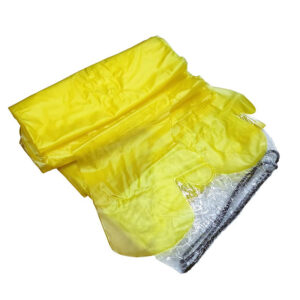Ergonomic considerations in mobile LAF cart design have become increasingly important as healthcare professionals and laboratory technicians spend extended periods working with these essential pieces of equipment. A well-designed ergonomic LAF cart can significantly enhance user comfort, reduce fatigue, and minimize the risk of musculoskeletal disorders. This article will explore the key aspects of ergonomic mobile LAF cart design and provide a comprehensive guide to ensuring user comfort and safety.
When it comes to creating an ergonomic mobile LAF cart, several factors come into play. These include adjustable height settings, proper positioning of controls and displays, ergonomic handles for easy maneuverability, and adequate workspace design. By focusing on these elements, manufacturers can develop LAF carts that not only meet stringent cleanliness standards but also prioritize the well-being of the users.
As we delve deeper into the world of ergonomic mobile LAF cart design, we'll explore how these considerations impact user comfort, productivity, and overall job satisfaction. From the importance of proper posture to the role of customizable features, we'll uncover the essential components that make a truly ergonomic LAF cart.
Ergonomic mobile LAF cart design is crucial for maintaining user comfort and preventing work-related injuries in healthcare and laboratory settings.
How does proper height adjustment contribute to user comfort?
One of the most critical aspects of ergonomic mobile LAF cart design is the ability to adjust the height of the work surface. This feature allows users of different heights to maintain proper posture while working, reducing strain on the neck, shoulders, and back.
Proper height adjustment ensures that users can work with their arms at a comfortable angle, typically around 90 degrees at the elbow. This position minimizes muscle fatigue and reduces the risk of repetitive strain injuries.
When designing a mobile LAF cart with adjustable height, it's essential to consider the range of user heights and the types of tasks that will be performed. A wide adjustment range, typically between 30 and 45 inches, can accommodate most users comfortably.
Incorporating a pneumatic or electric height adjustment mechanism in mobile LAF carts can significantly improve user comfort and reduce the risk of musculoskeletal disorders.
| Height Adjustment Range | User Percentile |
|---|---|
| 30-36 inches | 5th percentile |
| 36-40 inches | 50th percentile |
| 40-45 inches | 95th percentile |
In conclusion, proper height adjustment is a fundamental aspect of ergonomic mobile LAF cart design. By allowing users to customize the work surface height to their individual needs, manufacturers can create a more comfortable and efficient working environment.
What role do ergonomic handles play in cart maneuverability?
Ergonomic handles are a crucial component of mobile LAF cart design, directly impacting the ease of maneuverability and user comfort. Well-designed handles can reduce strain on the user's hands, wrists, and arms during cart movement.
When considering handle design, factors such as grip circumference, texture, and positioning are essential. Handles should be sized to fit a range of hand sizes comfortably and positioned at a height that allows for natural arm and wrist alignment during use.
YOUTH has recognized the importance of ergonomic handles in their mobile LAF cart designs, incorporating user-friendly features that enhance maneuverability without compromising on cleanliness standards.
Ergonomic handles with a diameter between 1.25 and 1.5 inches and a non-slip texture can significantly improve grip comfort and reduce the force required to move the cart.
| Handle Feature | Ergonomic Benefit |
|---|---|
| Diameter | Reduces grip fatigue |
| Texture | Improves control |
| Positioning | Promotes natural posture |
In summary, ergonomic handles play a vital role in enhancing the overall usability of mobile LAF carts. By focusing on handle design, manufacturers can create carts that are not only easy to maneuver but also contribute to user comfort and safety.
How does workspace design impact user efficiency and comfort?
The design of the workspace on a mobile LAF cart is crucial for both user comfort and efficiency. A well-designed workspace takes into account the tasks that will be performed and arranges tools and equipment in an easily accessible manner.
An ergonomic workspace design should include ample surface area for task performance, strategically placed storage compartments, and integrated cable management systems. These features help reduce unnecessary reaching and twisting motions, which can lead to strain and fatigue over time.
Additionally, the workspace should be designed with proper lighting in mind. Adequate illumination reduces eye strain and helps prevent errors, especially when performing detailed tasks within the LAF cart.
Incorporating adjustable task lighting and glare-reducing surfaces in mobile LAF carts can significantly improve visual comfort and task accuracy for users.
| Workspace Feature | User Benefit |
|---|---|
| Ample surface area | Reduces clutter and improves organization |
| Accessible storage | Minimizes reaching and twisting |
| Cable management | Prevents tripping hazards and improves cleanliness |
| Task lighting | Enhances visibility and reduces eye strain |
In conclusion, thoughtful workspace design is essential for creating an ergonomic mobile LAF cart. By considering the specific needs of users and the tasks they perform, manufacturers can develop carts that promote efficiency, comfort, and safety.
How do control panel placement and design affect user interaction?
The placement and design of control panels on mobile LAF carts play a significant role in user comfort and efficiency. Poorly positioned controls can lead to awkward postures and repetitive strain, while well-designed interfaces enhance usability and reduce the risk of errors.
When designing control panels, it's important to consider factors such as visibility, reach distance, and intuitive layout. Controls should be placed within the user's primary reach zone, typically between shoulder and waist height, to minimize excessive stretching or bending.
Furthermore, the use of touch-screen interfaces or large, easy-to-press buttons can improve usability, especially when users are wearing gloves. Clear labeling and logical grouping of controls also contribute to a more user-friendly experience.
Implementing ergonomic control panel designs with intuitive layouts and easily accessible controls can reduce user fatigue and improve overall efficiency in mobile LAF cart operation.
| Control Panel Feature | Ergonomic Benefit |
|---|---|
| Touch-screen interface | Reduces physical strain |
| Large buttons | Improves accuracy |
| Logical grouping | Enhances usability |
| Adjustable angle | Accommodates different user heights |
In summary, the ergonomic design of control panels is crucial for creating user-friendly mobile LAF carts. By focusing on accessibility, visibility, and intuitive layout, manufacturers can develop control interfaces that enhance user comfort and operational efficiency.
What role does material selection play in ergonomic LAF cart design?
The choice of materials used in mobile LAF cart construction significantly impacts both ergonomics and functionality. Selecting appropriate materials can contribute to reduced weight, improved durability, and enhanced user comfort.
Lightweight yet sturdy materials such as aluminum alloys or high-strength plastics can make carts easier to maneuver without compromising structural integrity. This is particularly important for users who need to move the cart frequently throughout their workday.
Additionally, the use of antimicrobial surfaces and easy-to-clean materials is crucial in maintaining hygiene standards while also considering ergonomic factors. Ergonomic considerations in material selection extend to factors like thermal conductivity and texture, which can affect user comfort during prolonged contact.
Incorporating advanced materials with low thermal conductivity and antimicrobial properties in mobile LAF cart design can enhance user comfort and maintain hygiene standards without compromising ergonomic principles.
| Material Property | Ergonomic Benefit |
|---|---|
| Lightweight | Improves maneuverability |
| Antimicrobial | Enhances hygiene |
| Low thermal conductivity | Increases comfort during prolonged use |
| Durable | Reduces maintenance frequency |
In conclusion, careful material selection is a crucial aspect of ergonomic mobile LAF cart design. By choosing materials that balance weight, durability, hygiene, and user comfort, manufacturers can create carts that meet both ergonomic and functional requirements.
How do customizable features enhance user comfort?
Customizable features in mobile LAF cart design play a crucial role in accommodating the diverse needs of users and improving overall comfort. These features allow for personalization of the workspace, ensuring that users of varying heights, preferences, and task requirements can optimize their working environment.
Some key customizable features include adjustable shelves, removable work surfaces, and interchangeable accessories. These elements allow users to configure the cart to best suit their specific tasks and working style, reducing unnecessary strain and improving efficiency.
Moreover, the ability to adjust airflow direction and intensity can significantly impact user comfort, especially during extended periods of use. This customization helps prevent fatigue and discomfort caused by continuous air exposure.
Incorporating a range of customizable features in mobile LAF cart design allows users to create a personalized workspace that maximizes comfort and efficiency, leading to improved job satisfaction and reduced risk of work-related injuries.
| Customizable Feature | User Benefit |
|---|---|
| Adjustable shelves | Optimizes storage and accessibility |
| Removable work surfaces | Adapts to different task requirements |
| Interchangeable accessories | Enhances versatility |
| Adjustable airflow | Improves comfort during extended use |
In summary, customizable features are essential for creating truly ergonomic mobile LAF carts. By providing users with the ability to tailor their workspace to their individual needs, manufacturers can develop carts that offer superior comfort and functionality across a wide range of applications.
How does noise reduction contribute to ergonomic design?
While often overlooked, noise reduction is a crucial aspect of ergonomic mobile LAF cart design. Excessive noise can lead to user fatigue, decreased concentration, and even long-term hearing damage. By focusing on noise reduction, manufacturers can create a more comfortable and less stressful working environment.
Noise reduction in LAF carts can be achieved through various means, including the use of high-quality, low-noise fans, vibration-dampening materials, and sound-absorbing components. These elements work together to minimize the overall noise output of the cart during operation.
Additionally, implementing smart control systems that adjust fan speed based on air quality requirements can help reduce unnecessary noise while maintaining proper air cleanliness levels.
Incorporating advanced noise reduction technologies in mobile LAF cart design can significantly improve the working environment, reducing user stress and fatigue while maintaining optimal air cleanliness.
| Noise Reduction Method | Ergonomic Benefit |
|---|---|
| Low-noise fans | Reduces overall sound output |
| Vibration dampening | Minimizes structural noise |
| Sound-absorbing materials | Improves acoustic comfort |
| Smart control systems | Optimizes noise levels and performance |
In conclusion, noise reduction is an essential consideration in ergonomic mobile LAF cart design. By implementing various noise-reducing technologies and materials, manufacturers can create carts that not only meet cleanliness standards but also provide a more comfortable and less stressful working environment for users.
Conclusion
Ergonomic mobile LAF cart design is a multifaceted approach that considers various aspects of user comfort, safety, and efficiency. From height adjustability and ergonomic handles to customizable features and noise reduction, each element plays a crucial role in creating a user-friendly workspace.
By prioritizing ergonomic considerations, manufacturers can develop mobile LAF carts that not only meet stringent cleanliness standards but also promote user well-being and productivity. This holistic approach to design helps reduce the risk of work-related injuries, improves job satisfaction, and ultimately enhances the overall performance of healthcare and laboratory professionals.
As technology continues to advance, we can expect to see further innovations in ergonomic LAF cart design. These developments will likely focus on integrating smart technologies, improving customization options, and utilizing advanced materials to create even more comfortable and efficient workspaces.
Ultimately, the goal of ergonomic mobile LAF cart design is to create a seamless integration between the user and their equipment, allowing professionals to focus on their critical tasks without being hindered by discomfort or inefficiency. By continuing to prioritize and refine ergonomic design principles, manufacturers can contribute significantly to the health, safety, and productivity of those working in cleanroom environments.
External Resources
Ergonomics and Musculoskeletal Disorders – This CDC page provides comprehensive information on ergonomics and musculoskeletal disorders, including prevention strategies and workplace interventions.
The Importance of Ergonomics in the Workplace – Healthline's article highlights the significance of ergonomics in preventing workplace injuries and improving overall employee health and productivity.
Ergonomic Guidelines for Manual Handling – The European Agency for Safety and Health at Work offers guidelines for safe manual handling tasks to reduce the risk of musculoskeletal injuries.
Creating an Ergonomic Workspace – Mayo Clinic provides practical tips on setting up an ergonomic workspace, including proper positioning of computer equipment and office furniture.
Ergonomics in the Workplace: A Practical Guide – This World Health Organization guide offers a practical approach to implementing ergonomics in various workplace settings.
Related Contents:
- Ergonomic Mobile LAF Carts: Top 5 Handle Designs
- Biotech Research: Mobile LAF Cart Applications
- Customizable Mobile LAF Carts: Design Your Ideal
- Cleanroom Mobile LAF Carts: Material Transport Tips
- Ergonomic Design in LAF Garment Cabinets: Key Features
- GMP-Compliant Mobile LAF Carts: Certification Guide
- Top 7 Compact Mobile LAF Carts for Small Labs
- Food Industry Mobile LAF Carts: Sterile Packaging
- Vertical Mobile LAF Carts: Top 5 Picks for 2025




























